Herbs and Spices
The most important part
of Indonesian cooking
Indonesian cuisine uses many herbs and spices. In almost every dish we use them. So it’s very important to know what you need to make you’re cooking succeed.
And not to forget this is the most important part of all thing: "you’re persistent and not to give up", because practice makes everything easier.
It’s seems that Indonesian cooking very difficult is (I’ve heard so many people say that in Europe) but it’s not really true.
In fact it’s really easy, what you need to know is how you use the herbs and the spice on the right way, and it’s very important how many and how to use it.
It’s necessary to use fresh spices and roots if you can get it, in some country in Europe is easy to find this kind of fresh products.
I’m pretty sure if you’re from Holland or German that you can pretty easy to obtain this kind spices and herbs. Especially in Holland I’m very known that you can get this fresh product in Chinese store, “Oriental”, they offer good and fresh products and they’re cheaper than any other Chinese store. And they’re pretty good to find everywhere in Holland.
If you lived in USA, and you’re really need some of spices and roots but you don’t want to go to the big cities to buy them, there is an online store that I’ve found by accident on the internet. They can provide you the basic needs for Indonesian cooking.
Here is the link: Indonesian Food Anywhere
If it’s not possible to get fresh product, it’s ok to use bottled ground spices from the supermarket. Although you have to know that you can’t get the dishes as good as they use fresh products.
Here are the most important spices, herbs and roots
Asam (Tamarind)
Tamarind is a dried and sold in packets. For use in a recipe like sayur asam, you have to soak a piece the size of walnut in a half cup of hot water for 5-10 minutes until soft. Squeeze it and mix it with the water. Strain it.
Cengkeh (Cloves)
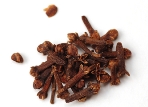
Remove the head of the clove if you want to lessen the smell of cloves in a dish.
Daun Jeruk Purut (Kaffir lime leaves)
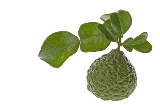
The leaves have a subtle fragrance which gives a distinctive taste to many lemon grass based dishes. Substitute with curry leaves or bay leaves, but bay leaves have stronger flavor. Use 1 bay leaf for every 2 or 3 kaffir lime leaves. This kind of leaf use in many dishes like soto ayam and rawon.
Daun Pandan (Screw pine leaf)
Pandan leaves give a typical flavor to dessert and savories, and a delicate green color to some desserts. As a flavoring, daun pandan can be substitute with vanilla extract.
Daun Salam (Bay leaf)
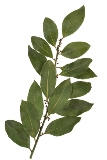
Give a subtle flavor to dishes. Substitute with curry leaves. This leaf use in many Indonesian dishes, so if you purchase it at the Chinese store, buy some frozen bay leaves, beside that they’re mostly fresh frozen, they can store for a while even months without getting lose some of the flavor.
Daun Suji (Suji leaf)
The leaf usually used together with pandan leaves to give a particular green color. Daun Suji can be substituted with green food color.
Jahe (Ginger)

Fresh ginger should be used if possible. Powdered ginger just can’t compare with the fresh root. Choose the small, fibrous light brown ginger when preparing spice pastes. The big pieces of ginger lack the bite and flavor of the small ones.
Jintan (Cumin)
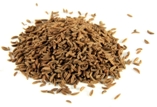
Usually sold in dried and powdered from. Easy to find at supermarket or Chinese store. Use sparingly as it has a strong smell.
Kapur sirih (Slaked lime)
Slaked lime is a paste obtained by grinding sea shells in a little liquid. This is the lime which is chewed with betel nuts, gambir and tobacco.
Kayu manis (Cinnamon)
Used in very small quantities in Indonesian cooking but an indispensable ingredient.
Kemiri (Candlenuts)
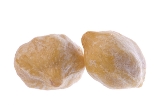
The waxy white kernel is ground together with other spices. Kemiri can also use to make sambal kemiri. This kind of sambal is very delicious with soto ayam.
Kencur (Aromatic ginger)
Kencur must be used very sparingly in cooking because the flavor is extremely strong. Some of dish use many of kencur like Karedok.
Ketumbar (Coriander)

It’s the best way to buy coriander seeds instead powdered form. It gives much better taste and smell, but you need to make it in powdered form before you can use it.
If you don’t want too much trouble to prepared it, powdered form from the store, it will do, but its lack of taste and smell.
To prepare the coriander seeds into fresh powdered form, baked the seeds in frying pan without oil, stir it occasionally until brown and smells good. Use the food processor to make it powdered form.
And here you get the best and good smell coriander.
Kunyit (Turmeric)
An essential root in Indonesian cooking, usually sold in dried and powdered form in Europe and USA. But you can also get fresh kunyit in USA through the online store as I mention above. But I find that dried and powdered form is much easier in use than fresh kunyit. It imparts its yellow color and pungent taste to many dishes. If you buy fresh turmeric, pick roots that are dark in color.
Langkuas (Galangal)
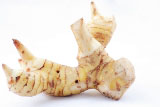
Mostly sold in dried and powdered form in USA and Europe. But if you looking hard enough there are plenty Chinese store sold fresh galangal. But you can also obtain them through the online store. They can provide you with Fresh Galanga
If you buy fresh galangal and you want to store it for a while without losing its freshness, store it in freezer, but before you do that, cut the galangal into small pieces before you store it. Especially if you need a little bit every time but you want fresh products, this is the best way to store it without losing some taste and freshness. You can apply this method to any kind of fresh roots and herbs.
Merica (Pepper)
Ketumbar, Jintan and merica are three spices that form a completely part of the traditional Indonesian cooking. When you buy the spices in bulk, make sure that they have been sun dried and all dirt removed. Put them in sterilized bottles, close them up tightly and store in a cool, dry place.
Pala (Nutmeg)
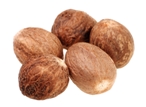
Fresh nutmeg is dark red in color and hard. If the nuts have fungus growing on them, they are spoiled and should be thrown away immediately.
If you have trouble finding fresh nutmeg on local supermarket, try online shop, this could be a solution instead in and out supermarket, but can't find anything.
Sereh (Lemon grass)
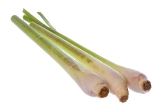 Used in most curry based dishes. Fresh lemon grass is used sliced, pounded or bruised. They form long thin clumps of leaves, which you put in a dish by tying it up in a knot first. Powdered sereh can be substituted, but use it sparingly.
Used in most curry based dishes. Fresh lemon grass is used sliced, pounded or bruised. They form long thin clumps of leaves, which you put in a dish by tying it up in a knot first. Powdered sereh can be substituted, but use it sparingly.
Terasi (Belacan)
A dark colored paste made from shrimps and used in very small amounts as a flavoring. It is used in two forms, raw and grilled. Raw terasi is ground up with other spices into a thick paste, which is then fried in a little bit of oil. Grilled terasi is used in recipes where the spices are not to be fried, but boiled. The terasi is grilled over a fire or gas flame, by itself, before it is made into a paste with the other spices.
Coconut
One of the most important things in Indonesian kitchen. They can use as a desert and also to make dishes very delicious and have particular taste.Click here to know more about coconut and how to make santan in traditional way.
Chilies
One of the most important ingredient in Indonesian cooking to make sambal. Sambal is very important for many Indonesian people. We can't eat without sambal. Click here to know more about chilies and how to choose and use it.
Return from Herbs and Spices to Indonesian cuisine
Homepage





